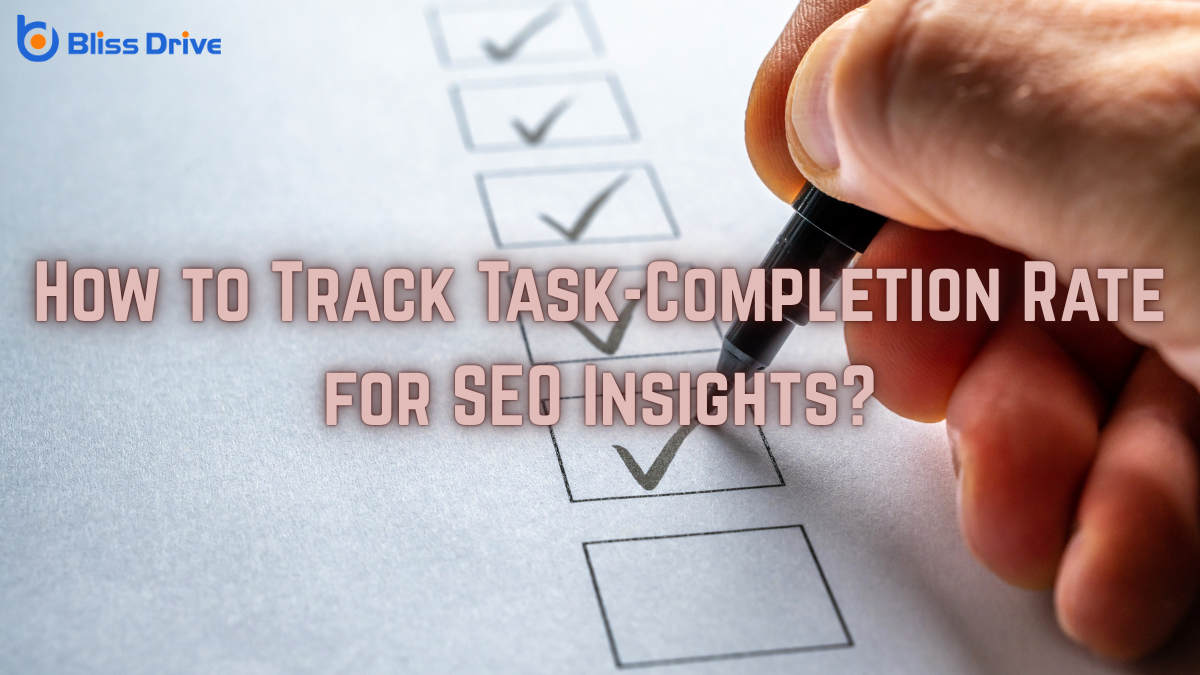Digital Marketing Services
Learn More About Us

To track task-completion rate for SEO insights, you need to identify key tasks aligned with user goals. Utilize tools like Google AnalyticsA web analytics service offered by Google that tracks and reports website traffic. and heatmaps for tracking interactions and behaviors. Regularly analyze user paths, focus on page load times, and apply A/B testingA method of comparing two versions of a web page or app against each other to determine which one pe... to spot improvements. Simplifying navigation and ensuring content matches user intent will boost TCR. These strategies help spotlight areas for SEO improvement, so there's plenty more to uncover!
When you're diving into the world of SEO, understanding task-completion rate (TCR) is essential for gaining insights into user engagementThe interactions that users have with a brand’s content on social media. and satisfaction. TCR measures how effectively users complete specific tasks on your website, providing a clear picture of the user experience.
You’ll want to evaluate how well your site’s design and content facilitate user goals, whether it's filling out a form or making a purchase.
To determine TCR, identify key actions users should complete. Track these actions to see how often visitors successfully execute them. High TCR suggests your website effectively guides users, while a low rate might indicate obstacles you need to address.

If you're serious about optimizing your website, tracking the task-completion rate (TCR) should be a top priority. TCR offers valuable insights into how effectively users can complete actions on your site, directly impacting user satisfaction and SEO performance.
By focusing on the TCR, you can identify potential obstacles that might be preventing visitors from achieving their goals. This understanding lets you make data-driven decisions, enhancing user experience and increasing conversionThe completion of a desired action by a referred user, such as making a purchase or filling out a fo... rates.
It's not just about drawing traffic; effective SEO guarantees visitors can achieve what they came for. Monitoring TCR helps you refine your website's functionality and content.
As a result, you increase engagement and retention, which search engines reward with better rankingsThe position at which a website appears in the SERP., ultimately driving your site's success.
How do you determine which tasks are essential for your website's success? Start by thinking about your primary goals.
Whether it's increasing sales, boosting engagement, or growing your email list, pinpoint what actions users need to take to achieve these outcomes.
Break down the user journey into specific steps, like signing up for newsletters, completing purchases, or filling out contact forms.
Prioritize tasks that directly impact your goals and support user experience.
Consider the most visited pages and assess what actions you want visitors to take there.
Analyze competitors to see what works for them.
To effectively monitor task completion on your website, start by setting up the right tools that give you actionable insights. Google Analytics is a great start; it tracks user interactions and helps identify where tasks are completed or abandoned. Implement event tracking to capture specific actions like form submissions or button clicks.
Consider using heatmap tools like Hotjar or Crazy Egg. They show you where users click, move, and scroll, providing a visual representation of user engagement with your site.
If you’re running an eCommerce site, platforms like Shopify or WooCommerce offerThe specific product or service being promoted by affiliates. built-in analytics to track purchases and cart abandonments.
Verify your tools are properly integrated and configured to collect accurate data, helping you make informed decisions to boost task completion rates.

With your monitoring tools set up, you can now focus on analyzing user behavior and engagement to gain deeper insights into task completion rates.
Start by examining how users navigate your site. Look for patterns in clicks, scrolling, and time spent on pages. This data helps you understand where users might face obstacles or confusion.
Pay attention to bounce rates and session durations, as they reveal how engaging your content is. A high bounce rateThe percentage of visitors who leave a website after viewing only one page. might suggest that users aren't finding what they're looking for.
Also, assess how users interact with specific features or calls-to-action. Are they missing essential steps? By understanding these behaviors, you can identify friction points and improve user experience, ultimately enhancing task completion and boosting your SEO efforts.
While diving into task-completion data, you'll uncover valuable insights that can greatly enhance your SEO strategy. By interpreting this data, you understand how users interact with your site and identify areas for improvement.
Here’s how you can use these insights effectively:
Understanding this data empowers you to make informed decisions and achieve better SEO outcomes.
You're about to explore how real-world strategies in tracking task-completion rates can transform your SEO efforts.
By looking at measurable outcomes, you'll see how businesses have successfully used these insights to boost their search rankings.
These case studiesIn-depth analyses of specific instances or examples to highlight success stories or lessons learned.... will give you practical examples of how to implement similar strategies for your own website.
When implementing real-world strategies for tracking task-completion rates, analyzing successful case studies can offer valuable insights.
You can learn from companies that have effectively integrated these strategies into their operations. By observing their methods, you’ll gain a clearer understanding of best practices.
These case studies often highlight:
Analyzing measurable outcomes provides a concrete foundation for understanding the effectiveness of task-completion tracking strategies. You’ll see how successful businesses have implemented these strategies by examining case studies.
For example, Company X increased its organic trafficVisitors who come to a website through unpaid search engine results. by 30% after identifying and optimizing low-performing pages based on task-completion data. By focusing on tasks users struggled with, they improved user experience and satisfaction.
Another case shows Company Y using task completion insights to streamline navigation, resulting in a 25% reduction in bounce rates.
These examples highlight the power of actionable insights derived from measurable outcomes. When you track and analyze completion rates, you uncover areas for improvement and growth.
Ultimately, it helps create a more streamlined and effective SEO strategy.

Tracking task-completion rates can be challenging, particularly when dealing with incomplete or inconsistent data. To overcome these hurdles, you need to identify common challenges and address them effectively.
Here are a few issues you might encounter:
Optimizing your task-completion rate begins with addressing the challenges identified in tracking. Focus on simplifying user navigation by ensuring your website’s layout is intuitive and efficient.
Streamline processes by removing unnecessary steps that hinder task completion. Use clear calls-to-action (CTAs) to guide users effectively. Analyze user behavior with tools like heatmaps to identify bottlenecks and areas for improvement.
Enhance page load speed to prevent users from abandoning tasks due to slow performance. A/B testing can be invaluable; test different versions of your pages to determine what works best.
Remember to align content with user intent, ensuring your audience finds value in what you offer. Regularly review and update your strategies, adapting them to changing user needs and technological advancements.
To effectively boost your SEO efforts, focus on tracking and optimizing task-completion rates. By identifying key tasks, setting up appropriate monitoring tools, and analyzing user behavior, you can gain valuable insights into your website's performance. Use the data to make informed decisions, overcome common challenges, and implement best practices. With a keen eye on task-completion rates, you'll enhance user experience and drive better search engine rankings, ultimately achieving your SEO goals. Stay proactive and watch your success grow.
